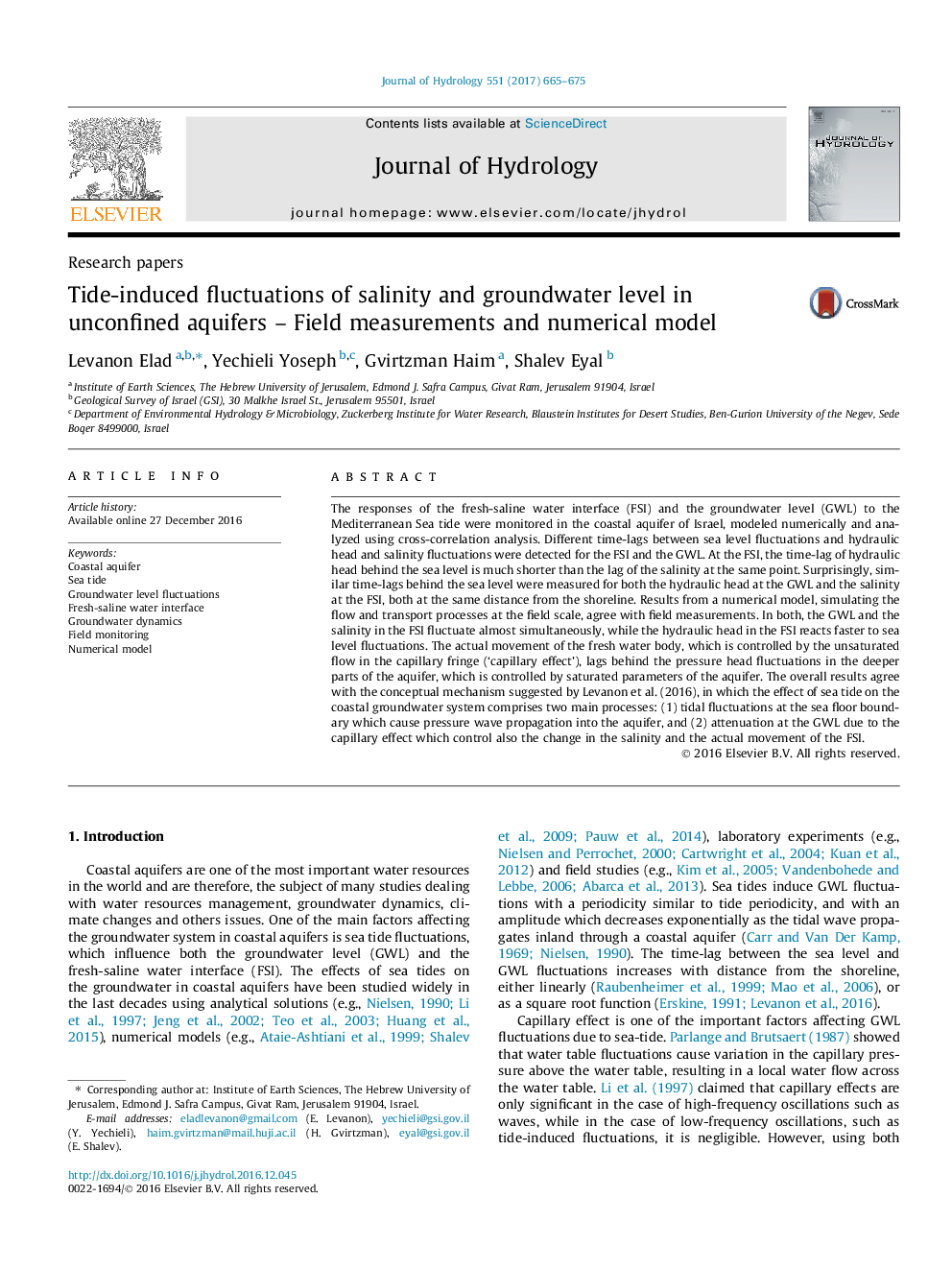| کد مقاله | کد نشریه | سال انتشار | مقاله انگلیسی | نسخه تمام متن |
|---|---|---|---|---|
| 5770868 | 1629903 | 2017 | 11 صفحه PDF | دانلود رایگان |

- We examine the tidal effect on salinity and water table in coastal aquifers.
- Field and numerical model results are analyzed and time-lag of head and salinity is calculated.
- Time-lag of salinity in the fresh-saline interface is similar to the water table.
- Time-lag of salinity is larger than that of the hydraulic head at the same place.
- Field and model results validate the conceptual mechanism suggested by Levanon et al. (2016).
The responses of the fresh-saline water interface (FSI) and the groundwater level (GWL) to the Mediterranean Sea tide were monitored in the coastal aquifer of Israel, modeled numerically and analyzed using cross-correlation analysis. Different time-lags between sea level fluctuations and hydraulic head and salinity fluctuations were detected for the FSI and the GWL. At the FSI, the time-lag of hydraulic head behind the sea level is much shorter than the lag of the salinity at the same point. Surprisingly, similar time-lags behind the sea level were measured for both the hydraulic head at the GWL and the salinity at the FSI, both at the same distance from the shoreline. Results from a numerical model, simulating the flow and transport processes at the field scale, agree with field measurements. In both, the GWL and the salinity in the FSI fluctuate almost simultaneously, while the hydraulic head in the FSI reacts faster to sea level fluctuations. The actual movement of the fresh water body, which is controlled by the unsaturated flow in the capillary fringe ('capillary effect'), lags behind the pressure head fluctuations in the deeper parts of the aquifer, which is controlled by saturated parameters of the aquifer. The overall results agree with the conceptual mechanism suggested by Levanon et al. (2016), in which the effect of sea tide on the coastal groundwater system comprises two main processes: (1) tidal fluctuations at the sea floor boundary which cause pressure wave propagation into the aquifer, and (2) attenuation at the GWL due to the capillary effect which control also the change in the salinity and the actual movement of the FSI.
Journal: Journal of Hydrology - Volume 551, August 2017, Pages 665-675